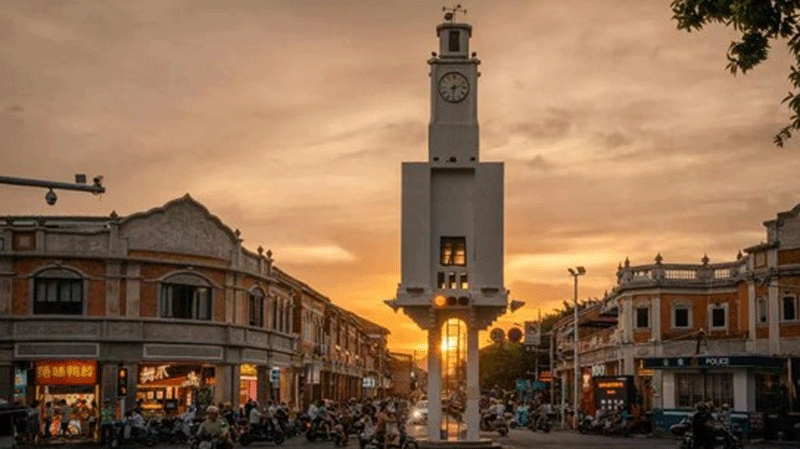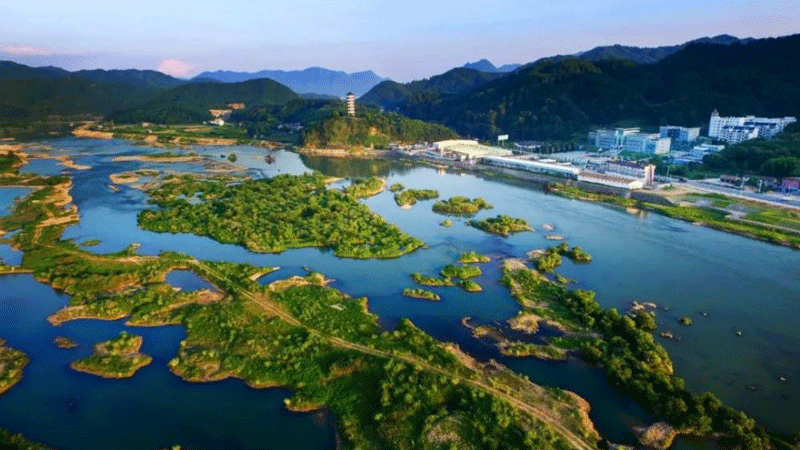Feature: Jakarta-Bandung High Speed Railway construction sees closer China-Indonesia cooperation
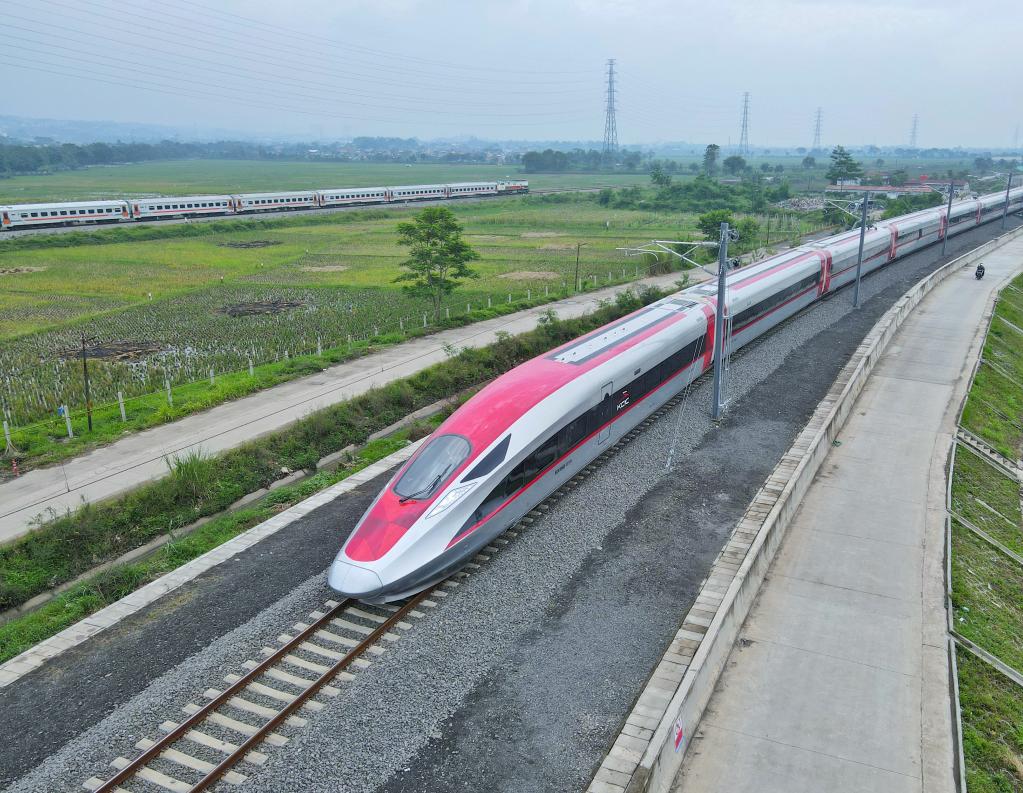
This aerial photo taken on Nov. 9, 2022 shows electric multiple units being tested for hot-running on the Jakarta-Bandung High-Speed Railway trial section in Bandung, Indonesia. (Photo by Li Peiyang/Xinhua)
"Cooperation, innovation and mutual benefits are the essence of the successful practice and spirit of the construction of the Jakarta-Bandung High-Speed Railway," said Dwiyana Slamat Riyadi, president director of KCIC, a joint venture consortium between Chinese and Indonesian state-owned firms that runs the line.
JAKARTA, Nov. 16 (Xinhua) -- A super-sleek, silver-bodied high-speed train, decorated with a flash of red symbolizing prosperity, drew slowly out of the Tegalluar station in Bandung, Indonesia's West Java province.
The Chinese-made Electric Multiple Units were undergoing a hot-running test of the catenary system of the Jakarta-Bandung High-Speed Railway trial section.
With a design speed of 350 km per hour, the railway is a flagship project that synergizes the China-proposed Belt and Road Initiative and Indonesia's Global Maritime Fulcrum strategy. Built with Chinese technology, it is a model of cooperation between developing countries.
"Cooperation, innovation and mutual benefits are the essence of the successful practice and spirit of the construction of the Jakarta-Bandung High-Speed Railway," said Dwiyana Slamat Riyadi, president director of KCIC, a joint venture consortium between Chinese and Indonesian state-owned firms that runs the line.
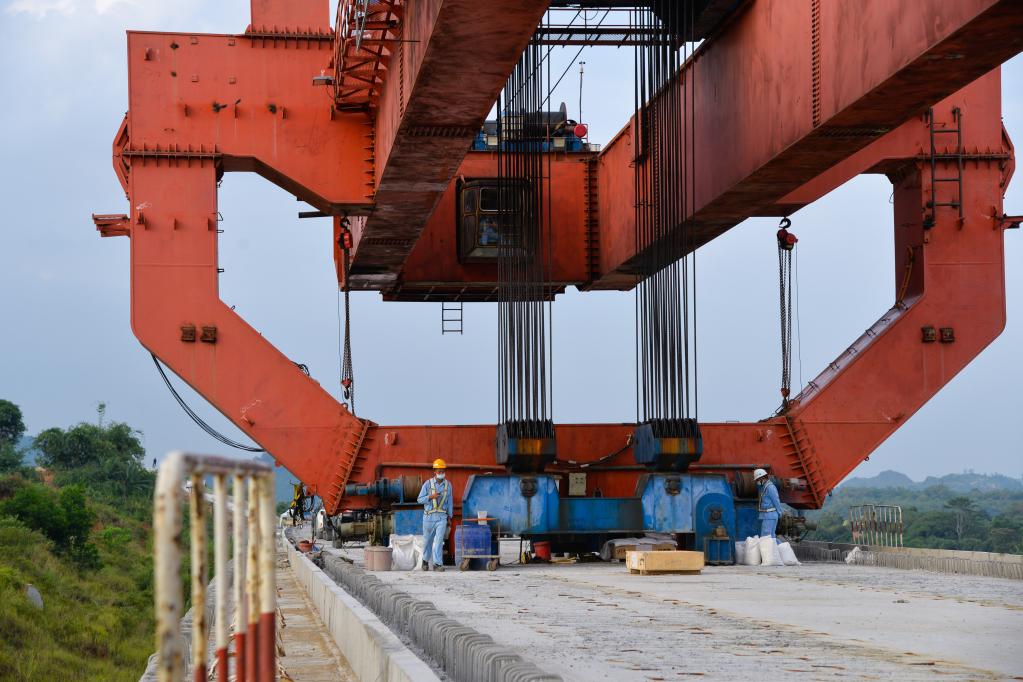
Workers are seen on the construction site of the erection of the last box girder on the Jakarta-Bandung High-Speed Railway in Purwakarta, Indonesia, Oct. 16, 2022.(Xinhua/Xu Qin)
China and Indonesia signed an agreement in October 2015 to establish the joint venture to build and operate the Jakarta-Bandung High Speed Railway. Its construction has been in full swing since 2018.
At present, all tunnels and culverts along the railway have been completed, as well as over 90 percent of the civil works of subgrade, bridges and stations. The overall construction has now entered the track-laying stage.
In an inspection tour in October, Indonesian President Joko Widodo said the participating parties have made painstaking efforts to overcome complex geological, epidemic and other difficulties without compromising on high standards and quality, which reflects a sound cooperative relationship between Indonesia and China.
Once put into operation, the railway will speed up and improve the mobility of people and goods, enhance Indonesia's overall competitiveness, and new economic growth drives will emerge in Jakarta and Bandung, Widodo said.
The high speed railway is in effect the first overseas construction project that fully uses Chinese railway systems, technology and industrial components.
Guo Lei, head of the design department of High-Speed Railway Contractor Consortium (HSRCC), said the railway has made many adaptations and technological innovations in accordance with the local climate, line conditions, and cultural traditions and habits of the people along the route.
One of the most difficult projects of the railway construction was the No. 2 tunnel located in Purwakarta county, West Java province.
A combination of clay, soft mud, sandstone and thin topsoil could easily lead to deformation, landslides and other safety risks.
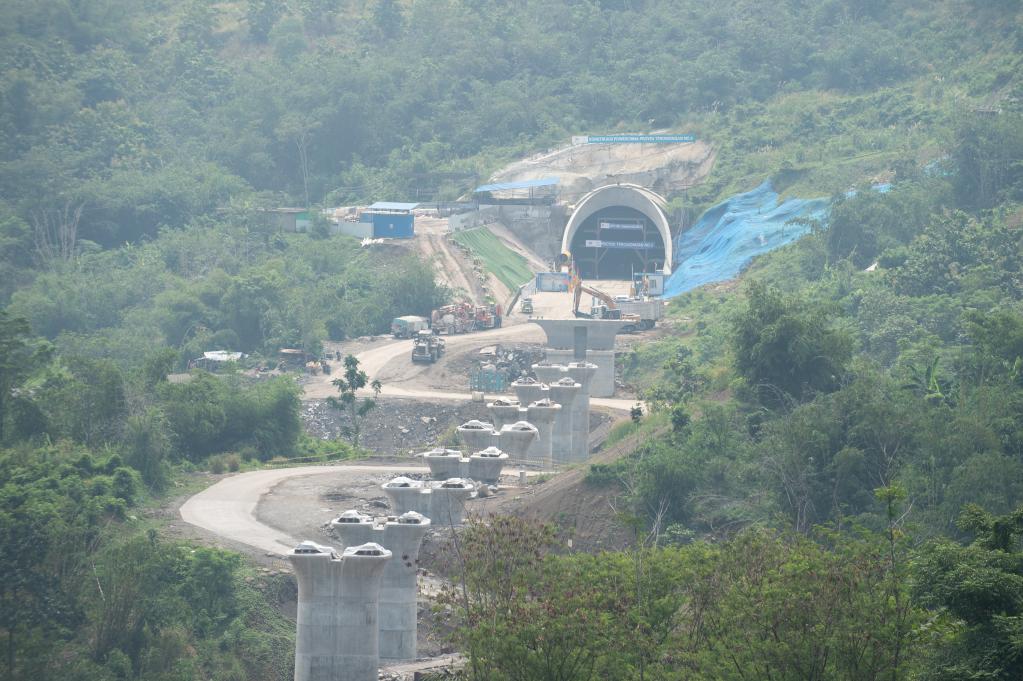
Photo taken on April 26, 2020 shows the No. 3 tunnel of the Jakarta-Bandung high-speed railway project in Indonesia. (Xinhua/Du Yu)
In such a complicated geographic and geological environment, China Railway International Group, an affiliate of China Railway, has led the HSRCC, contractor of the project, to implement innovative construction methods for the successful completion of the tunnel.
Hendri Firnanda, health, safety and environment coordinator of the project, highlighted the Chinese workers' dedication and passion, saying,"I thoroughly respect my colleagues from China, because they are highly enthusiastic about this project."
Zhang Chaoyang, country manager of Bank of China Jakarta Branch, found it quite challenging, and equally rewarding, to deepen understanding and communication with his Indonesian colleagues as the project advanced.
"From getting to know each other to supporting each other, our friendship has been cemented as the new railway takes shape," said Zhang. "The Jakarta-Bandung High-Speed Railway connects not only the two cities, but also the hearts of Chinese and Indonesian people."
Not only have they learned more about the Chinese culture, local staff like Firnanda have also sharpened their skills of railway construction. Nearly 45,000 Indonesian workers have attended training programs offered by the Chinese side.
With concerted efforts, the line is expected to be launched in June 2023, slashing the traveling time between Jakarta and Bandung to just 40 minutes from over three hours.
Allan Tandiono, project management and business development director of KCIC, applauded the hard work and cooperation between China and Indonesia.
"Despite the pandemic, Chinese and Indonesian railway builders have worked hard to overcome the difficulties together, showing the strength and speed of Chinese infrastructure," said Tandiono.
Photos
Related Stories
- Interview: Indonesian minister says he looks forward to taking Jakarta-Bandung high-speed train
- Training session of Jakarta-Bandung High-Speed Railway held in Bandung
- ASEAN's economic development benefits from BRI projects: officials, experts
- Silk Road e-commerce boosts two-way trade between China, countries along BRI route
- China stress its commitment to push ahead peace and development for humanity at 20th CPC National Congress
Copyright © 2022 People's Daily Online. All Rights Reserved.








